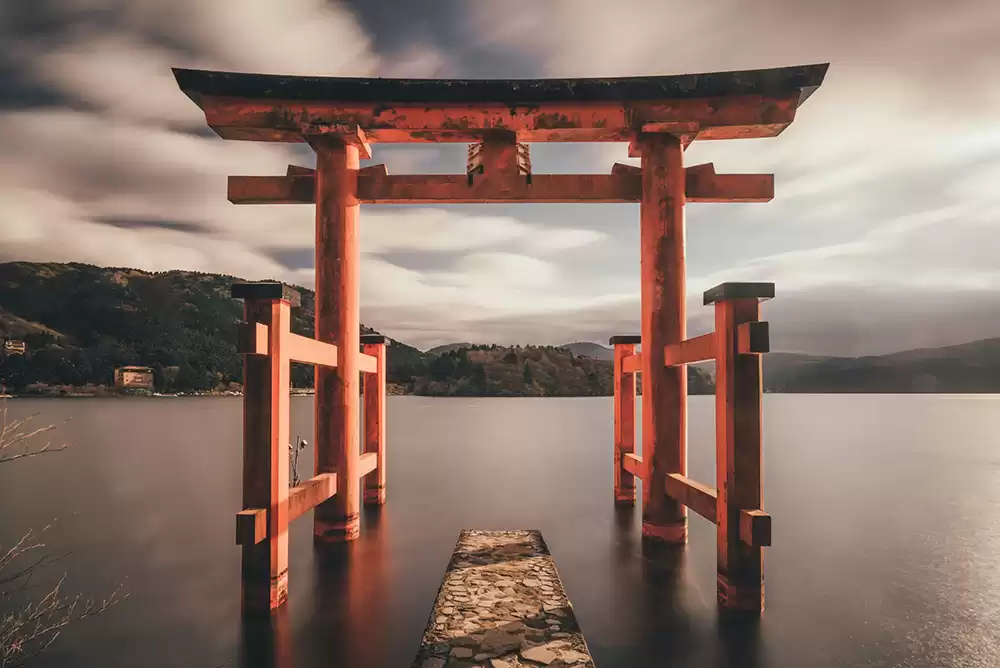
01 Jun The Mysterious Origin of the Japanese Shakuhachi Flute
The Japanese Shakuhachi flute is an instrument steeped in centuries of history, culture, and enigmatic allure. As artisans dedicated to preserving and perpetuating this ancient craft, Chikushin Shakuhachi invites you to delve into the depths of its origins, evolution, and contemporary significance.
Historical Origins and Evolution of the Shakuhachi
The origins of the Shakuhachi are shrouded in the mists of time, tracing back to the mystical realms of ancient East Asia. Believed to have been introduced to Japan from China during the 7th century, the Shakuhachi underwent a remarkable evolution, adapting to its new cultural milieu and assuming a distinct identity within Japanese musicology. Originally crafted from the root end of bamboo stalks, this primitive instrument gradually transformed into the elegant flute we recognize today, its design refined through centuries of meticulous craftsmanship.
Connection to Zen Buddhism and Meditation Practices
Inextricably intertwined with the spiritual landscape of Zen Buddhism, the Shakuhachi transcends its role as a mere musical instrument, serving as a conduit for spiritual enlightenment and meditative contemplation. Adopted by wandering monks known as “komuso” during the Edo period (1603-1868), the Shakuhachi became an emblem of their asceticism, used as a tool for meditation and self-realization. Through its haunting melodies and ethereal timbre, the Shakuhachi invites practitioners to embark on a journey of inner exploration, transcending the boundaries of mundane existence and attaining a state of profound serenity.
Traditional Construction Techniques and Materials
Crafted with utmost precision and reverence, the Shakuhachi embodies the essence of traditional Japanese craftsmanship. Utilizing high-quality madake bamboo harvested from the pristine forests of Japan, artisans meticulously shape each flute using time-honored techniques passed down through generations. From the precise angle and depth of the utaguchi (mouthpiece) to the inner bore dimensions, every aspect of the Shakuhachi is meticulously calibrated to achieve optimal resonance and tonal purity. Whether jiari (with a built-in mouthpiece) or ji nashi (without a built-in mouthpiece), each flute bears the hallmark of superior quality and artisanal mastery.
Role of Shakuhachi in Japanese Folklore and Legends
Imbued with a rich tapestry of folklore and legends, the Shakuhachi occupies a central place in Japan’s cultural imagination. From the mythical tales of the deity Benten playing the Shakuhachi to enchant listeners to the legendary exploits of renowned masters such as Kurosawa Kinko and Watazumi Doso Roshi, these stories reflect the instrument’s enduring legacy and profound impact on Japanese society. Whether evoking the ethereal beauty of nature or channeling the depths of human emotion, the Shakuhachi continues to captivate audiences with its timeless allure.
Notable Shakuhachi Masters Throughout History
Throughout the annals of history, a pantheon of esteemed masters has emerged to champion the artistry of the Shakuhachi. From the pioneering efforts of the Fuke sect monks to the virtuosic performances of modern-day maestros, these luminaries have left an indelible mark on the fabric of Japanese music. Among them, luminaries such as Kurosawa Kinko, Watazumi Doso Roshi, and Yokoyama Katsuya stand as towering figures, their contributions shaping the course of Shakuhachi music for generations to come. Through their dedication and artistry, they have ensured this ancient tradition’s continued vitality and relevance in the modern world.
Modern Revival and Global Influence of the Shakuhachi
In an age of globalization and cultural exchange, the Shakuhachi has transcended its traditional confines to captivate global audiences. From the concert halls of New York to the temples of Kyoto, enthusiasts flock to experience this iconic instrument’s haunting melodies and transcendent beauty. In the hands of contemporary virtuosos such as Riley Lee, John Neptune, and Monty Levinson, the Shakuhachi continues to evolve and innovate, forging new pathways of artistic expression while honoring its venerable heritage. As a symbol of cultural diversity and artistic excellence, the Shakuhachi stands as a testament to the enduring power of music to unite and inspire humanity.
In conclusion, the Japanese Shakuhachi flute remains a symbol of mystery and wonder, beckoning us to explore its depths and unlock its hidden secrets. Whether as a vessel for spiritual enlightenment, a repository of cultural heritage, or a conduit for artistic expression, the Shakuhachi transcends the boundaries of time and space to touch the hearts and minds of all who encounter its sublime melodies. As stewards of this ancient tradition, Chikushin Shakuhachi is honored to share its legacy with enthusiasts worldwide, inviting you to embark on a journey of discovery and enlightenment through the transcendent beauty of the Shakuhachi flute.
If you are an enthusiast of the Shakuhachi’s ancient legacy, visit us now!


